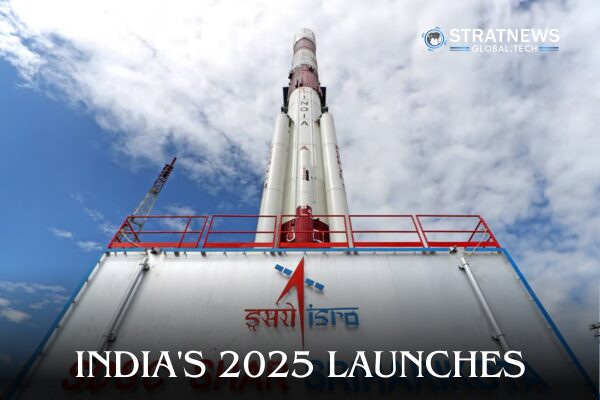India Plans 10 Orbital Launches in 2025 as Space Ambitions Grow
India’s space agency, ISRO, is set to significantly increase its launch activity in 2025, with a total of 10 orbital missions scheduled. This marks a notable for India rise from the five launches completed in 2024 and could push India’s annual launch count into double figures for the first time.
ISRO to Support Government and Commercial Goals
The Indian Space Research Organisation (ISRO) will lead the charge, with missions covering satellite navigation, Earth observation, telecommunications, and human spaceflight preparation. Among the 10 missions, ISRO will launch four Geosynchronous Satellite Launch Vehicle (GSLV) rockets, one LVM-3, a human-rated LVM-3 for the Gaganyaan programme, three Polar Satellite Launch Vehicles (PSLV), and one SSLV solid-fuel rocket.
A major highlight for 2025 is the G1 mission under the Gaganyaan human spaceflight programme, planned for no earlier than March. This uncrewed test will be followed by additional test flights, G2 and G3, ahead of a potential crewed mission in 2026.
Another key launch will be the NASA-ISRO Synthetic Aperture Radar (NISAR) mission, now rescheduled for around March due to a radar antenna issue. It will be launched aboard a GSLV and will monitor land and ice using L- and S-band radars.
India’s Commercial and Private Space Sector Expands
In a significant milestone, NewSpace India Limited (NSIL) will conduct its first commercial PSLV launch, carrying the TDS-01 technology demonstration satellite. This move aligns with ISRO’s broader aim to enhance private participation and public-private partnerships in the space sector.
Skyroot Aerospace, a private Indian startup, is also preparing for its first orbital mission with the Vikram-1 rocket. Designed to lift payloads of up to 290 kilograms into sun-synchronous orbit, this mission marks a growing role for private companies in India’s space ambitions.
ISRO Chairman S. Somanath noted that scaling up production and testing capabilities is essential to meet these targets. He highlighted the need for greater investment and industrial capacity to support India’s growing space programme.
with inputs from Reuters


